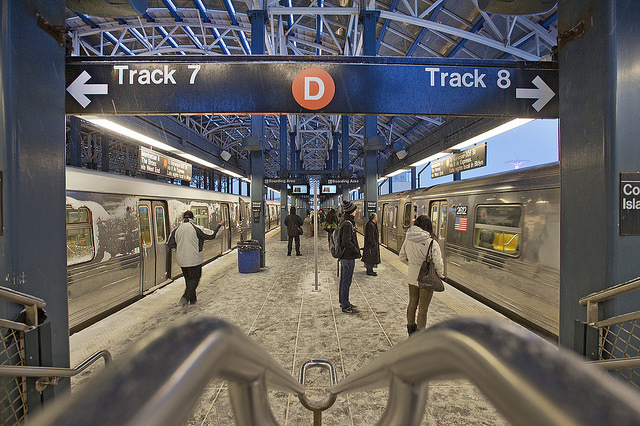
Hundreds of American manufacturers stand to benefit from rail infrastructure investment.
Investment in passenger rail and transportation infrastructure would increase job creation, spur economic growth, and is good for the environment, according to a new report from the BlueGreen Alliance (BGA) and Environmental Law & Policy (ELPC).
Released Jan. 30, the report showcases how supporting rail and transit infrastructure investment would create significant rail and transit manufacturing opportunities here in the United States. The U.S. rail system is in desperate need of repair and investment, especially since ridership is on the upswing — Amtrak alone saw a 48 percent bump in ridership from 2000 to 2014, for example. Combined commuter, light and heavy rail saw a 75 percent increase since 1995.
And there are hundreds of American manufacturers — if not more — who could benefit from this crucial infrastructure investment.
More than 750 companies in at least 39 states are manufacturing components for passenger rail and transit, including railcar and locomotive producers, according to the report. In just the midwest and mid-Atlantic regions, there are an additional 540 companies manufacturing sub-components, materials, track and infrastructure, and providing repair and remanufacturing.
All told, the rail manufacturing industry supports roughly 90,000 jobs.
“This report underscores that investing in the transportation systems we need for a strong, prosperous economy, is also critical to rebuild good manufacturing jobs all across the country — in communities both nearby and far from transit and rail systems themselves,” says Kim Glas, executive director of the BlueGreen Alliance.
It’s no secret that here at the Alliance for American Manufacturing we support long-term investment in our nation’s infrastructure, including transit and rail systems. For every $1 billion invested in transportation infrastructure, roughly 21,000 new jobs would be created. That means that a long-term transportation bill worth $114 billion would create 2.5 million new jobs.
And rail is a crucial part of our overall transportation infrastructure, as it provides another transportation avenue for commuters — and an important way for manufacturers to move products. As the Center on Globalization, Governance & Competitiveness at Duke University noted in a 2014 report:
“The U.S. rail infrastructure – both freight and intercity passenger – is one of the most important links in the nation’s overall transportation infrastructure portfolio. Crucially, it also possesses some of the greatest potential for expansion, routinely attracting high volumes of both freight and passengers away from highways and airports.”
BGA and ELPC also focus on the need for long-term federally funded investment in the form of a federal transportation bill, particularly since there is such a growing need.
Annually, there are 31.6 million intercity rail trips in the U.S.A. If you think that number is large, try comprehending that there are 35 million DAILY transit trips in the United States.
New York alone attributes 5.5 million daily subway rides, followed by Chicago at 1.7 million and Washington, D.C. at 721,000 rides per day.
With a growing demand for passenger rail and transit equipment, this provides an opportunity to maximize America’s economic, manufacturing and job creation benefits not only in cities, but in rural areas as well. “Modernizing our nation’s passenger rail and transit systems will improve mobility, alleviate congestion on highways and at airports, and will reduce pollution,” says Howard Learner, executive director of ELPC.
Historically, there has been bipartisan agreement on investing in transportation, perusing increased mobility and creating less congestion. But Congress has kicked the can in recent years, and has yet to move forward with a long-term infrastructure investment strategy.
Tell Congress to invest in modern infrastructure and move America forward.
